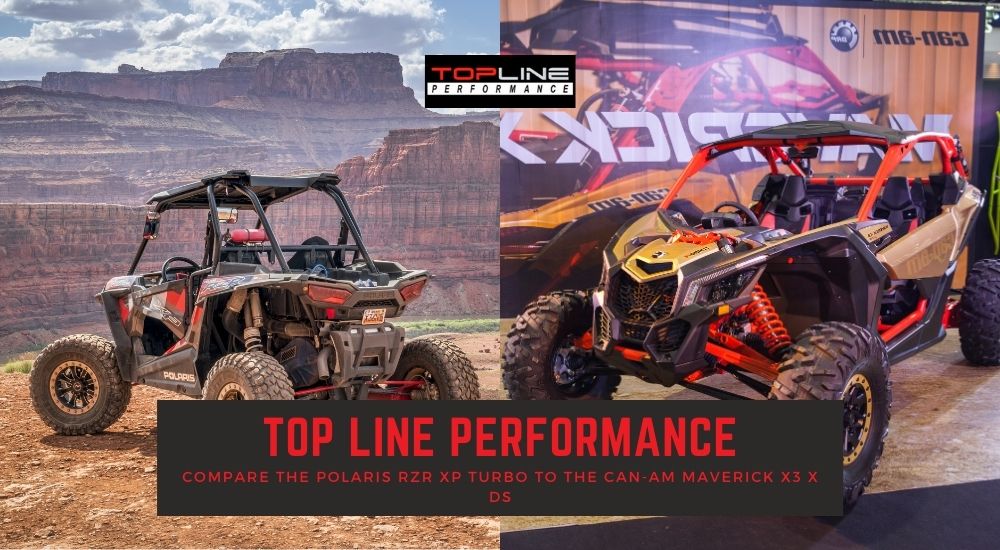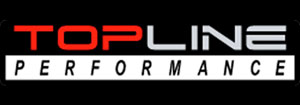
As two of the most powerful and fun UTVs on the market, the Polaris RZR XP Turbo and Can-Am Maverick X3 X DS have created new opportunities for offroad enthusiasts. Orange County offroad & auto repair experts particularly Top Line Performance recommend doing some research before committing to one model, as they each provide different kinds of inherent advantages. When you do a side-by-side comparison, you can see that while the Polaris RZR XP Turbo wins in certain categories, the Can-Am Maverick X3 X DS dominates in others. So, depending on your offroading needs, one may suit you better than the other.
For years, the Polaris RZR XP 1000 has been highly regarded for its sports performance. When the XP1K came out, this signaled a new dawn of innovation for UTV. The Can-Am Turbo arrived on the scene as the first turbo-inducted engine in the industry. Polaris clapped back with the XP 1000 chassis, which had a turbo-inducted engine as well. In order to keep up with the Polaris RZR’s handling and horsepower, Can-Am released the all-new X3 model. If you’re looking into purchasing Can-Am off road cars, then here is everything you need to know about the Can-Am Maverick X3 X DS versus the Polaris RZR XP Turbo.
All About Power
When looking at UTV’s power, you have to look at the engine, transmission, and final drive system. The Polaris RZR XP Turbo offers a parallel twin-cylinder, turbo-inducted, 925cc, dual overhead camshaft engine. This engine is both electronically fuel-injected and liquid-cooled. The CVT generates 168 horsepower to the on-demand AWD system. The Can-Am Maverick X3 X DS, on the other hand, provides a triple-cylinder, turbo-inducted, 900cc, four-stroke engine that is also electronically fuel-injected and liquid-cooled. According to the offroad & auto repair experts of Top Line Performance, the Maverick uses a CV-style transmission with Visco-Lok X, a 4x4 system that has an automatically locking front differential.
Working that Suspension
The Polaris RZR XP Turbo utilizes Fox shocks with compression adjustment. The front suspension offers about 16 inches of travel with a dual-A-arm design. The Can-Am Maverick X3 X DS provides 20 inches of suspension travel, 20 inches of real travel and a dual-A-arm design along with trailing-arm design. This vehicle’s Fox shocks are a bit more adjustable. For this reason, the Maverick wins high-speed sections. However, the Polaris RZR seems to do a better job at driving on rocky terrain without tossing you around your seat. It’s 90-inch wheelbase and smooth suspension works at slower speeds for more tricky terrain.
Steering and Handling
In terms of control, the Maverick wins with its great steering-stem feel and electric assist. This model can round corners much smoother and at faster speeds. However, the Polaris RZR is great as a multipurpose UTV. The cockpit is comfortable and the seats are positioned upright. Plus, the RZR has fewer blind spots than its beautiful competitor.
All the Rest
If you’re looking to save on fuel costs, then the Maverick X3 is your best bet. The Polaris RZR, while not as fuel-efficient, does offer a more powerful engine. Many people find that the Polaris offers better visibility, stronger breaks, and more efficient on-boarding/off-boarding. Its four-wheel-drive capabilities are unmatched and its suspension is incredible for more technical offroading. The Maverick X3 is a better choice if you’re looking to get some speed. The handling optimized for carving corners and achieving effortless turns. Ultimately, both machines offer their own benefits and strengths and will satisfy any offroad enthusiast on their next adventure.

